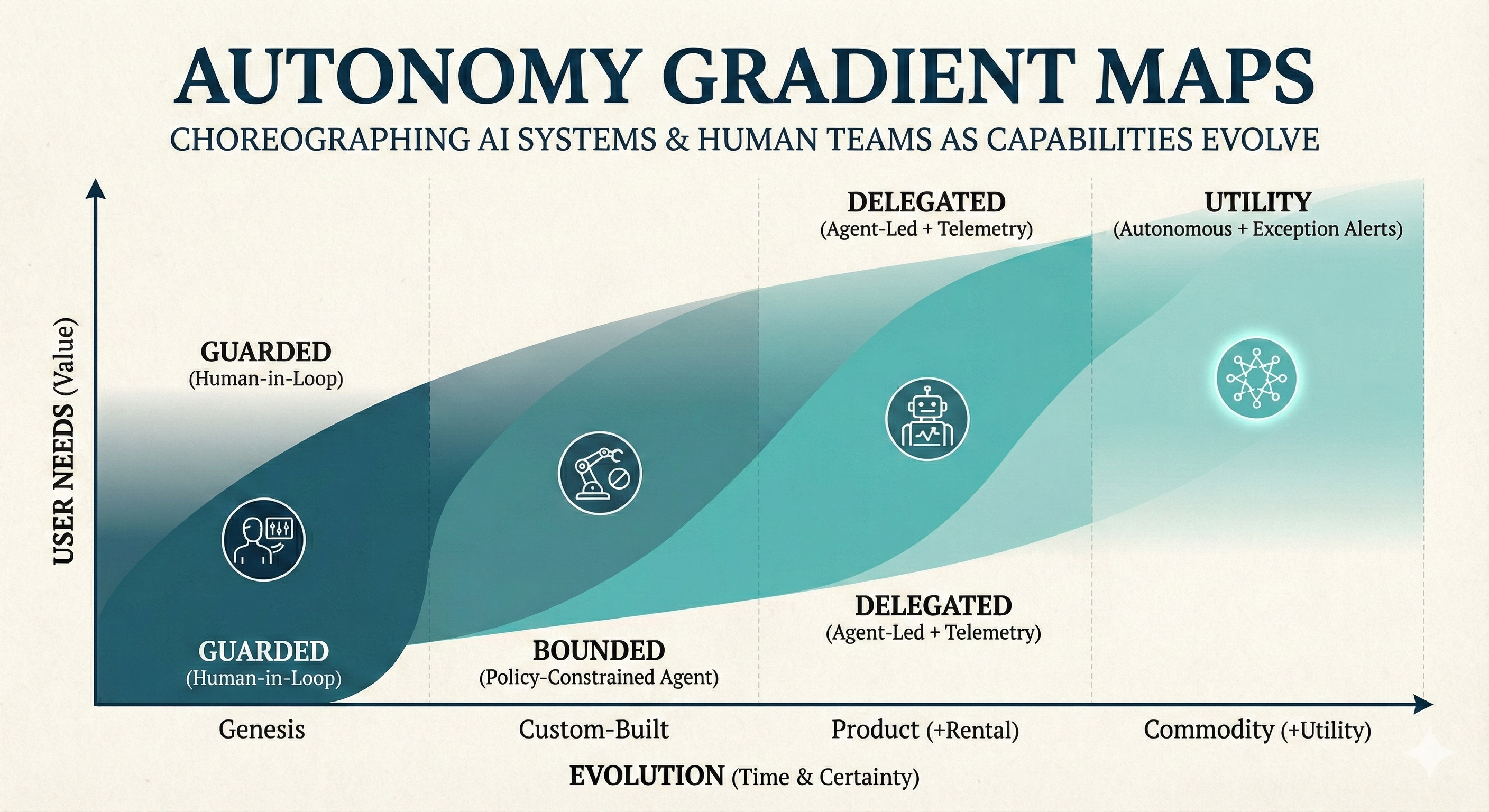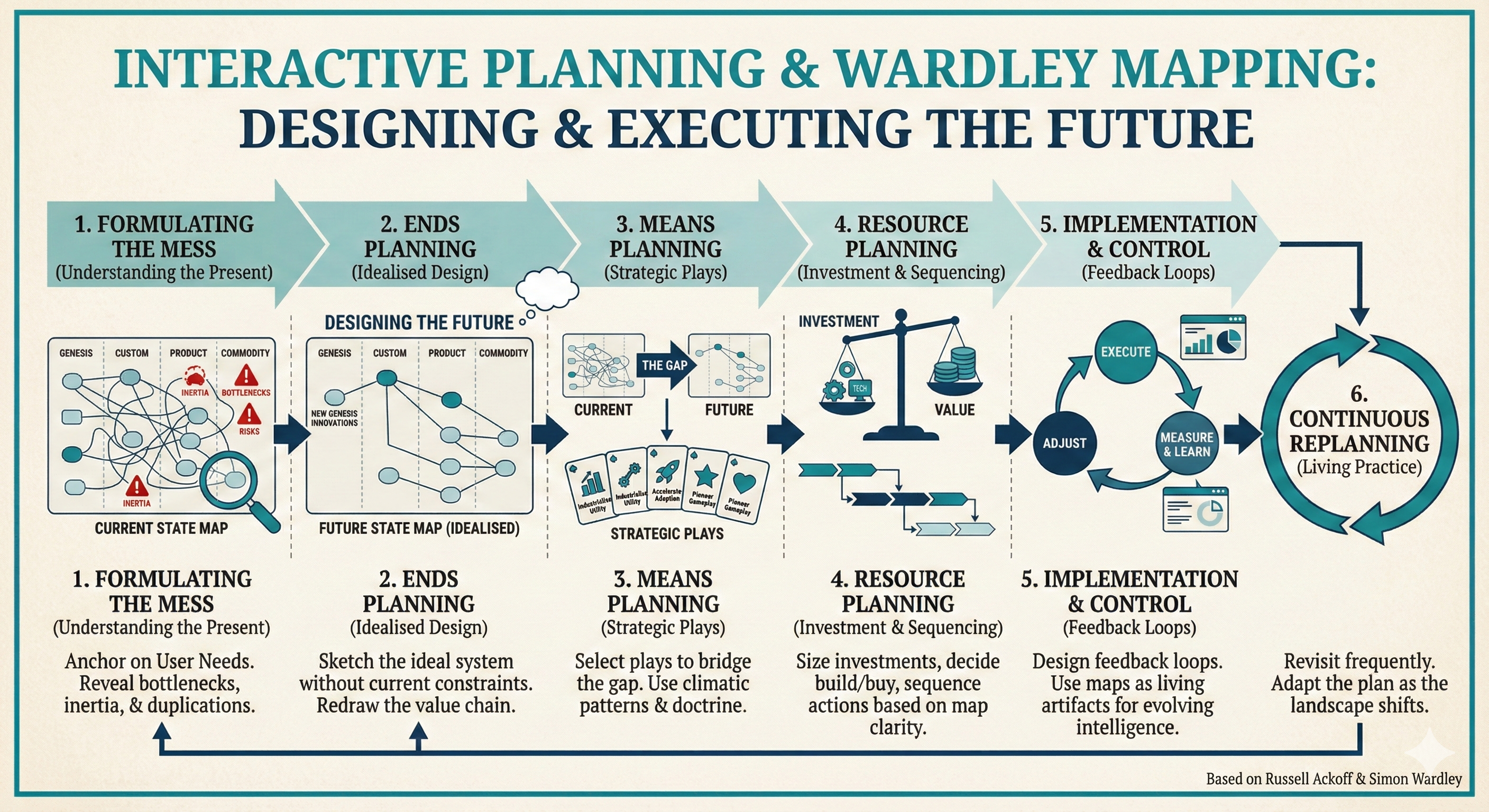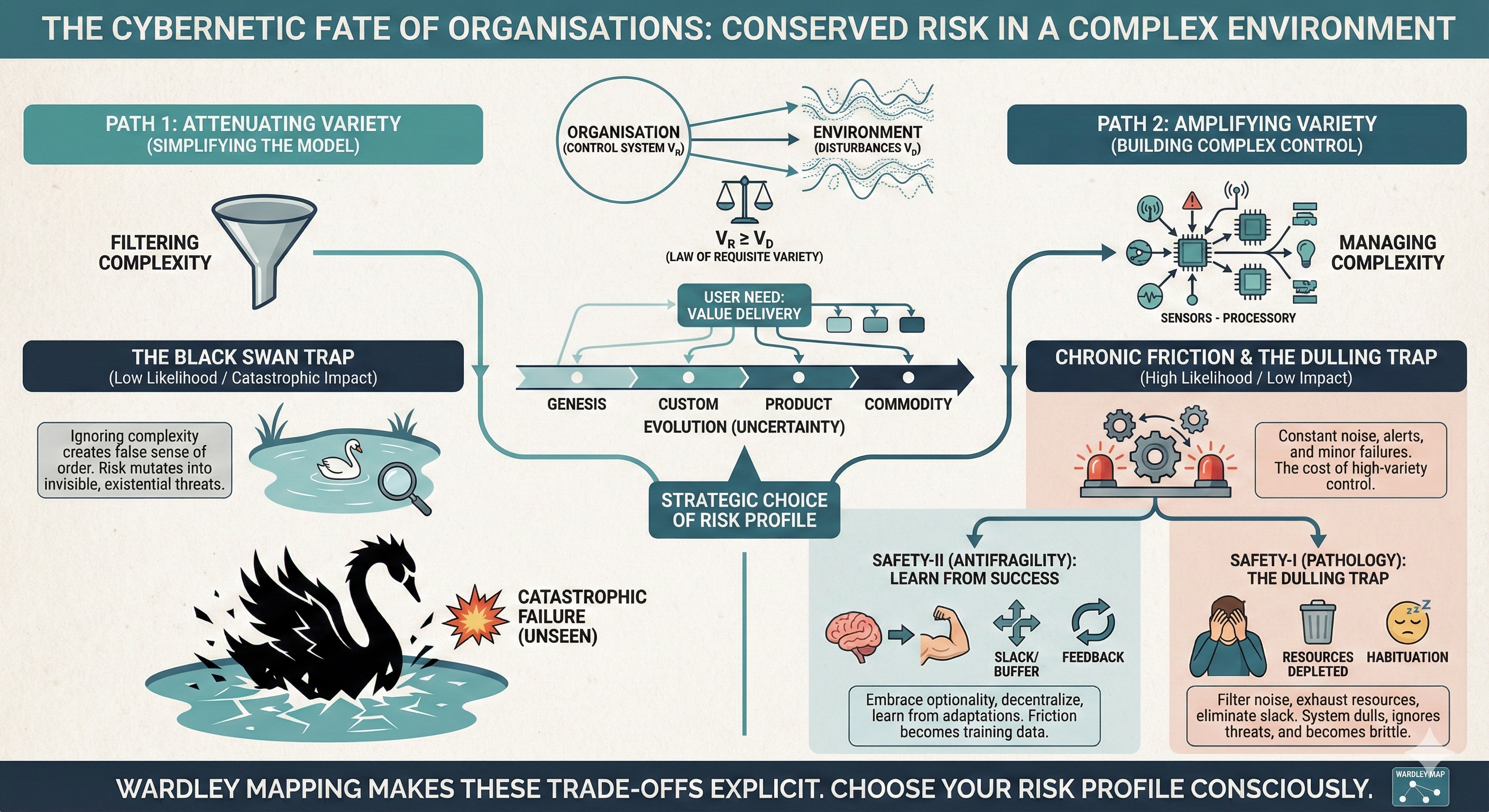The Multi-Model Mind: Meta-Rationality for Wardley Leaders
Your AI safety team wants to pause deployment. Your product team sees only competitive risk. The map shows the component is custom-built and evolving fast. Which model wins? If you choose just one, you’ve already lost. Wardley Doctrine already warns us to Use Appropriate Methods—avoid one-size-fits-all approaches to delivery, governance, or even mapping itself. That doctrine is a gateway into meta-rationality: the ability to notice when a formal method has hit its limits and to fluidly swap in different lenses without abandoning rigour. Charlie Munger called it a "latticework of models"; David Chapman calls it meta-rationality—the pragmatism of choosing and combining frames instead of worshipping one.



 The LRV states that the variety (V) of your control system must be at least equal to the variety of disturbances from the environment:
The LRV states that the variety (V) of your control system must be at least equal to the variety of disturbances from the environment: 